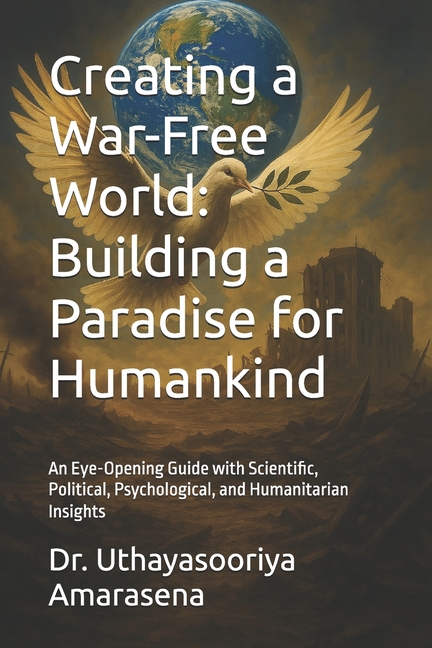Description
1.1 The Dream of a War-Free World
1.2 The Cost of Conflict vs. the Value of Peace
1.3 Why This Book is Needed Now
2. Understanding the Global War Machinery
2.1 History of Warfare and Its Evolution
2.2 The Global Arms Trade
2.3 Defense Budgets vs. Development Budgets
2.4 The Politics of Fear, Control, and Arms Race
2.5 Religions, Ethnicities, and Geopolitical Divide
2.6 Media Manipulation and War Justification
3. Economic and Human Cost of Wars
3.1 Financial Cost of Major Conflicts
3.2 Human Suffering and Death Toll
3.3 Destruction of Infrastructure and Environment
3.4 Refugee Crises and Displacement
3.5 Generational Trauma and PTSD
3.6 Opportunity Cost: What the Money Could Have Done
4. Who Benefits from War?
4.1 Arms Manufacturers and Profiteering
4.2 Political Power Games and Empire Building
4.3 Media Corporations and Ratings
4.4 Economic Sanctions, Resource Grabs, and Neo-Colonialism
5. The True Enemies of Humankind
5.1 Diseases and Global Health Threats
5.2 Hunger, Malnutrition, and Food Insecurity
5.3 Climate Change and Environmental Collapse
5.4 Natural Disasters: Earthquakes, Tsunamis, Floods
5.5 Poverty, Illiteracy, and Economic Inequality
5.6 Mental Illness and Social Isolation
6. A Vision for a War-Free Paradise-Like World
6.1 What If the World United Against Common Enemies?
6.2 The Moral and Scientific Argument for Peace
6.3 The Economic Miracle of Global Collaboration
6.4 The Psychological and Spiritual Impact of a Peaceful Planet
6.5 Interconnected Humanity: One Earth, One Family
7. Practical Pathways to Global Peace
7.1 Reallocating Defense Budgets to Human Development
7.2 Global Disarmament and Nuclear Treaty Enforcement
7.3 Strengthening International Institutions for Conflict Resolution
7.4 Ethical Global Governance
7.5 Replacing Competitive Nationalism with Collaborative Globalism
8. The Role of Science and Technology
8.1 Technology for Good: Innovations in Medicine, Agriculture, and Climate
8.2 AI and Robotics for Human Advancement, Not War
8.3 Global Disease Surveillance and Preventive Medicine
8.4 Open Science: Sharing Knowledge Across Borders
8.5 Climate Tech and Disaster-Resilient Infrastructure
9. Education and Media for Peace
9.1 Global Peace Education Curricula from Early Childhood
9.2 Promoting Critical Thinking and Cultural Tolerance
9.3 Media's Role in Shaping Peaceful Societies
9.4 Fighting Disinformation and Propaganda
9.5 Storytelling for Empathy and Human Unity
10. Building Empathy Across Borders
10.1 Interfaith and Intercultural Dialogues
10.2 Cultural Exchange Programs and Youth Diplomacy
10.3 Virtual Connections and Friendships through Technology
10.4 Community Service and Volunteerism as Tools for Peace
10.5 The Psychology of Compassion and Its Global Impact
11. Global Models of Peace-Oriented Nations
11.1 Case Study: Costa Rica (No Army Model)
11.2 Japan and Germany: Post-War Peace Constitutions
11.3 Nordic Countries and Social Trust
11.4 Bhutan: Gross National Happiness Index
11.5 UN Peacekeeping and Its Lessons
12. World Religions and Philosophies Supporting Peace
12.1 Buddhism: Ahimsa and Universal Compassion
12.2 Christianity: Love Thy Neighbor and Peace Teachings
12.3 Hinduism: Vasudhaiva Kutumbakam - "The World is One Family"
12.4 Indigenous Wisdom and Harmony with Nature
13. Overcoming Barriers to Global Peace
14. What Can Individuals Do?
15. Roadmap to a Peace-First Future
16. Conclusion
Product Details
- Jul 5, 2025 Pub Date:
- 9798291145005 ISBN-10:
- 9798291145005 ISBN-13:
- English Language




